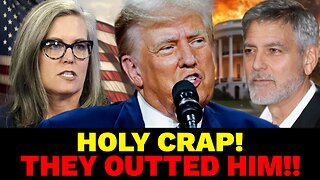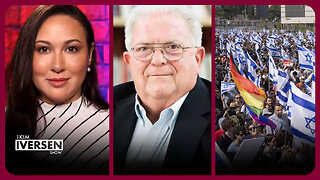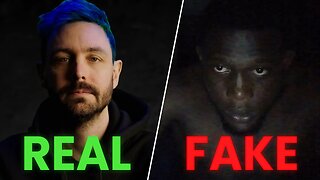Top Secret UFO Research Found Years Later- The Paul Hill Story
Paul Richard Hill (1909–1990) was a mid–twentieth-century American aerodynamicist. He was a leading research and development engineer and manager for NASA (National Aeronautics and Space Administration) and its predecessor, NACA (the National Advisory Council for Aeronautics) between 1939 and 1970, retiring as Associate Chief, Applied Materials and Physics Division at the NASA Langley Research Centre. He is arguably most widely known today as the author of Unconventional Flying Objects: a Scientific Analysis.
Hill was born in Odebolt, Iowa in February 1909.[4] After graduating with a B.S. in mechanical engineering from University of California, Berkeley in 1936, he was Professor of Aeronautics at the Polytechnic College of Engineering in Oakland, California for three years before joining the National Advisory Committee of Aeronautics (NACA) in 1939. He continued to work in a range of senior R&D management roles when NACA became the National Aeronautics and Space Administration (NASA) in 1958 at the NASA Langley Research Center. Hill was married to Frances Hoback Hill (d. 1999). They had one daughter, Julie M. Hill. Paul Richard Hill died on April 9, 1990 in the James River Regional Convalescent Centre, Newport News, Virginia, USA.
The Paul R Hill Special Collection is held by the Archives of American Aerospace. He was awarded NASA's Exceptional Service Medal in 1969. This award was "… granted for significant achievement or service characterized by unusual initiative or creative ability that clearly demonstrates substantial improvement in engineering, administative [sic] space flight, or space-related endeavors which contribute to NASA programs". In 1970 Hill received a citation for outstanding scientific leadership for "directing research applicable to space laboratories and other spacecraft
By the early 1950s, in part inspired by his personal interest in the 'flying saucer' or 'UFO' phenomenon, Hill began experimenting in his own time with kinesthetically controlled flying platforms. This led to an official project, which Hill initiated with Charles Zimmerman, who had been independently working on similar concepts for some time. This project designed and test flew such platforms in collaboration with the United States Air Force, the Royal Canadian Airforce and the US Office of Naval Research. The increased understanding of the aerodynamic and performance characteristics of such platforms informed future design work for the Lunar Landing Module (LM), other VTOL designs and experiments with disc shaped aircraft in the period.
In the early 1950s Hill was part of a specially-assembled advisory panel of "great men"; aerodynamicists advising Sandia Labs on problems encountered with the design of the second generation bombs (H Bombs). In addition to Hill, who at this time headed NACA's Pilotless Aircraft Division, the "great men" listed by Dr Robert F Brodsky of Sandia Labs in his memoir were Jack Northrop (founder of Northrop Aircraft), George Schairer (Chief of aerodynamics at Boeing), Ira H. Abbott ("a legendary engineer"), Ed Heinemann (Chief engineer Douglas Aircraft), Dr. Alex Charters ("a famous ballistician"), Al Sibilia (Vought aircraft chief of aerodynamics), Dr. Charles Poor (Chief Scientist Army's Ballisic Research Laboratory), and "several other distinguished engineers". It was Hill and Charters, however, whom Brodsky called the "heroes". Hill's specific contribution was in diagnosing the aerodynamic problems in the bomb design, though Brodsky acknowledges that at the time they were ignored until a year later when the Sandia scientists realized they were right. "Both experts were correct, but they were too far ahead of us technically".
In 1956 the US Air Force established project HYWARDS, with the aim of developing a hypersonic design capable of up to Mach 12, as a successor to the X-15. The aerospace historian, James Hansen notes that a number of NACA engineers later joined the initial HYWARDS study group at Langley Research Centre "notably Paul Hill, configuration and propulsion…". Hill made a number of important contributions, particularly in the design of hypersonic wind tunnels.
By 1959 Hill became involved in research for a future lunar mission. A lunar study group was established under the leadership of Clint Brown who asked for the participation of six of "Langley's most thoughtful analysts: David Adamson, Supersonic Aerodynamics Division; Paul R. Hill, PARD; John C. Houbolt, Dynamic Loads Division; Albert A. Schy, Stability Research Division; Samuel Katzoff, Full-Scale Research Division; and Bill Michael of his own Theoretical Mechanics Division". This was one of many study groups to examine a lunar mission during the period, with arguably its major contribution being in initiating the concept of rendezvous in orbit between a lander and a main spacecraft.".
-
 2:22:40
2:22:40
Jewels Jones Live ®
1 day agoTHE ART OF LAWFARE | A Political Rendezvous - Ep. 79
36.7K29 -
 25:30
25:30
Stephen Gardner
23 hours ago🔴BREAKING: Trump MISTRIAL details | George Clooney's Netanyahu SECRET LEAKS!!
58K374 -
 1:18:43
1:18:43
Kim Iversen
1 day agoAmbassador Chas Freeman "Israel Has Never Put Forward A Peace Proposal"
74.2K196 -
 48:34
48:34
Breaking Points
2 days agoMAGA Lawyer DEBATES Liberal Analyst On Trump Legal Cases
46.6K44 -
 19:09
19:09
Scammer Payback
4 days agoConfronting Scammer Payback Imposters
91.2K33 -
 9:07
9:07
shaneyyricch
1 day agoAddressing my beef with Harry Sisson
77.9K113 -
 1:52:46
1:52:46
Game On!
21 hours ago $2.75 earnedBoston Celtics Can't Win Game 2! | Sports Morning Espresso Shot
79.5K34 -
 1:00:01
1:00:01
Trumpet Daily
1 day ago $3.08 earnedMarxist Left Continues to Imprison Trump’s Inner Circle - Trumpet Daily | June 7, 2024
62.5K59 -
 11:59:49
11:59:49
The Amber May Show
15 hours ago $12.45 earnedReAwaken America Tour Detroit, MI - DAY 2 | Join General Flynn, Eric Trump, Kash Patel, Mayor Giuliani & Team America + Request Tickets for October 18-19 Selma, NC At: TimeToFreeAmerica.com
95.2K32 -
 12:23
12:23
Freakin' Reviews
1 day agoRice Robot Review: One-Touch Rice Cooker? | As Seen on TV
90.2K30